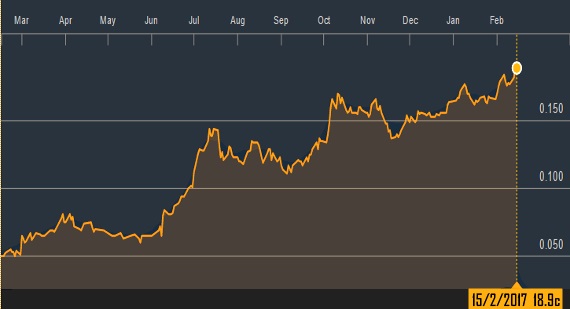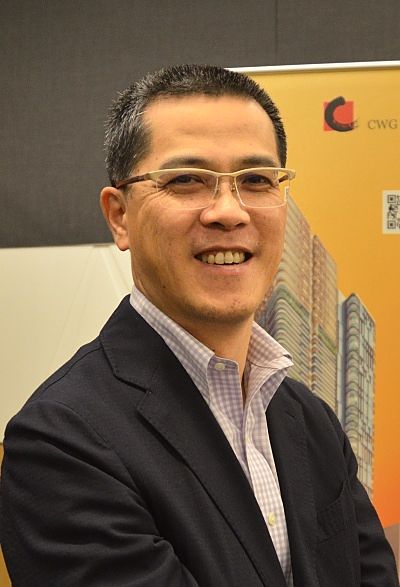CWG International is the first of 6 companies to report record earnings which we had highlighted in 6 companies expected to report record earnings are ....
 CWG International's milestones in FY2016 that boosted its share price include: steady project launches in Australia and China, foray into US, adoption of dividend policy and share buyback mandate, removal from SGX watchlist, and launch of fund management company. (Bloomberg chart) CWG International's milestones in FY2016 that boosted its share price include: steady project launches in Australia and China, foray into US, adoption of dividend policy and share buyback mandate, removal from SGX watchlist, and launch of fund management company. (Bloomberg chart)
CWG International has made good its promise of paying a 1-cent dividend that it made during its 3QFY2016 briefing.
|
At the FY2016 results briefing on Thursday (16 Feb), Executive Chairman Qian Jianrong and Executive Director / CFO Chua Hwee Song addressed, among other things, the question of its high debt ratio in the context of the Group's expansion strategy. Below is an excerpt of their discussion.
Mr Qian: The average debt ratio for PRC companies is on the high side, especially for real estate developers. Having said that, PRC real estate developers are not as aggressive as US developers. The proportion of project financing arising from internal funds is only 5-10% for US real estate developers, compared to 20-30% for us.
|
“Our name change to CWG International expresses the vision for our real estate segment as well as the education segment which we will focus on this year.” - Qian Jianrong |
Drawdown restrictions on developers loan facility are less stringent in China than in Singapore. This means we need not wait till project completion to recoup capital investments.
Secondly, the relatively higher downpayment ratios required of home buyers in the PRC lifts our accounts receivables, and that contributes to our debt ratio.
A third contributor is our use of mezzanine financing for land purchases.
Our debt ratio was also significantly raised by our acquisition of a few land parcels last December.
My personal observation is that small to medium sized real estate developers in Hong Kong have debt ratios that range from 65% to 80%.
Debt ratios of developers vary by country because of their different business models. US developers are relatively highly levered because they use a fund management business model.
My personal opinion is that it is the norm for small to medium sized high growth PRC companies to have debt ratios of 60-70%.
|
– Chua Hwee Song (NextInsight file photo) |
Mr Chua: Analysts in Singapore are used to integrated property companies with significant amounts of investment properties on their books, including hotels and retail properties.
These companies have a thick equity strip and very low leverage ratios. If you take the vertical of debt attributable to development projects, all companies should have a leverage ratio of at least 70%.
Otherwise, it is not worthwhile developing the project. The loan to valuation ratio extended by banks of 70% may be used as a benchmark to whether a company is overly levered. As we are a pure developer, our debt ratio is not entirely comparable with that of integrated property companies.
| ♦ Mr Qian on this year's growth strategy | ||||||||||||||
|
This year, we also intend to expand our education infrastructure business segment. |
||||||||||||||




 We have an internal target of annual earnings growth of 30-50% over the next few years. This translates into real estate presales receipts of RMB 40 billion by 2021. We plan to raise capital to help us finance this growth target.
We have an internal target of annual earnings growth of 30-50% over the next few years. This translates into real estate presales receipts of RMB 40 billion by 2021. We plan to raise capital to help us finance this growth target. 




